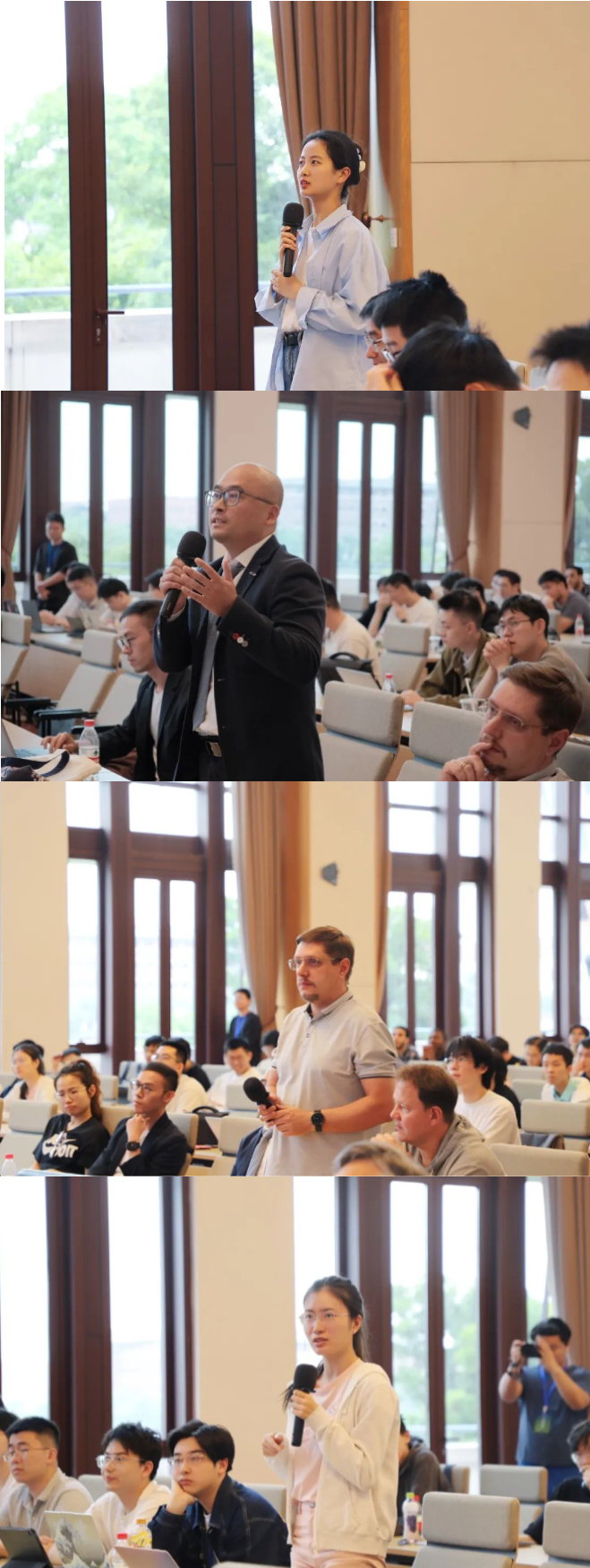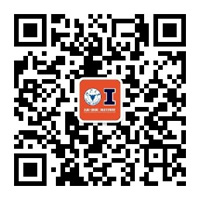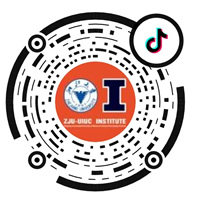In the intertwining of the micro and macro, the collision of engineering and biology is like the first light of dawn, illuminating the future of personalized diagnostics and cellular machine printing. Under precise engineering technology, small cellular building blocks shine like brilliant stars, sparkling with infinite possibilities in the vast sky of life sciences. This is not just a scientific miracle but a revolution in the medical field, granting each life a unique health code and driving the transformation of healthcare from a collective to a personalized approach.
▲ Rashid Bashir's Lecture
On the afternoon of May 30, 2024, the sixth phase of Juanhu International Academician Lecture Hall invited Professor Rashid Bashir, a member of the US National Academy of Medicine and Dean of the Grainger College of Engineering at UIUC, to give a special lecture. The event was hosted by Professor Lee Der-Horng, Dean of ZJUI.
▲ Academician Lee Der-Horng, Dean of ZJUI, Hosted the Event
Professor Rashid Bashir delivered a lecture on the theme "Intersection of Engineering and Biology Across the Scales: Opportunity for Personalized Diagnostics and Printing Cellular Machines." He introduced the treatment of sepsis and personalized medicine, including real-time diagnostics, specific cell counting, and nucleic acid recognition. He showcased the practical applications of breakthrough research in microfluidics and lab-on-a-chip technologies.
Professor Rashid Bashir mentioned the latest advancements in the field of cellular machines. In his paper "Neuromuscular Actuation of Biohybrid Motile Bots" published in the Proceedings of the National Academy of Sciences, he introduced a type of biohybrid microrobot driven by neuromuscular units. These biohybrid robots control skeletal muscle tissue through motor neurons with optogenetic properties, stimulating muscle movement under light. This research lays the foundation for developing intelligent, environment-responsive multicellular systems engineering, with broad applications in bioengineering, medicine, and self-healing material technologies.
▲ Rashid Bashir Delivering the Lecture
Professor Rashid Bashir also addressed the ethical issues of cellular machines. The self-repair and self-assembly capabilities of cells enable cellular machines to achieve high autonomy, which raises certain ethical concerns. Therefore, he emphasized the importance of establishing and implementing appropriate ethical and legal frameworks early in the technology development process to ensure the smooth application of innovative technologies.
Additionally, Professor Rashid Bashir posed an intriguing question: What drives scientific research? Using well-known figures as examples, he cleverly explained the key elements driving scientific development from the perspectives of exploring fundamental principles and practical applications. Prof. Rashid Bashir believes that basic research is not an unattainable ideal but requires transforming practical applications into concrete results. With that, he recommended the book "The Usefulness of Useless Knowledge" to the audience, encouraging us to consider the mutual value of basic and applied research. He advocated finding a balance between scientific exploration and practical application to drive substantive progress in medical engineering.
▲ Lecture Scene
Professor Rashid Bashir's lecture resonated deeply with Zhejiang University's motto, "Seeking Truth and Pursuing Innovation." "Seeking Truth" represents the pursuit of knowledge and the exploration of truth; "Innovation" is about courageously breaking through and continually advancing on this foundation.
▲ Professor Rashid Bashir's Lecture Resonating with Zhejiang University's Motto "Seeking Truth and Pursuing Innovation"
During the Q&A session, the audience actively asked questions. Professor Rashid Bashir engaged with the audience on topics such as the realization of cellular machines, their expandability, and the relationship between biology and engineering. He pointed out that both biology and engineering highly depend on mathematical and physical modeling and suggested a research approach that gradually progresses from simple to complex models.

▲ Q&A
Professor Rashid Bashir's lecture left a deep impression on the attendees. It not only provided an opportunity to gain an in-depth understanding of the intersection of medicine and engineering but also revealed the innovative possibilities brought by the integration of these disciplines, sparking enthusiasm among students to explore this cutting-edge scientific field.
▲ Academician Lee Der-Horng Presenting Professor Rashid Bashir with a Commemorative Gift and the SURF Mascot from the Juanhu International Academician Lecture Hall
▲ Group Photo
With the rapid advancement of technology, medicine is undergoing unprecedented changes. Researchers are combining microscopic cells with precise engineering techniques to create unprecedented medical devices and diagnostic methods, like lights in the vast ocean of life. This represents not only scientific progress but also a significant leap in human health and well-being, allowing each life to radiate infinite possibilities under the light of technology.
▲ UIUC President Robert J. Jones and the Delegation Visiting Smart Urban Future Laboratory







